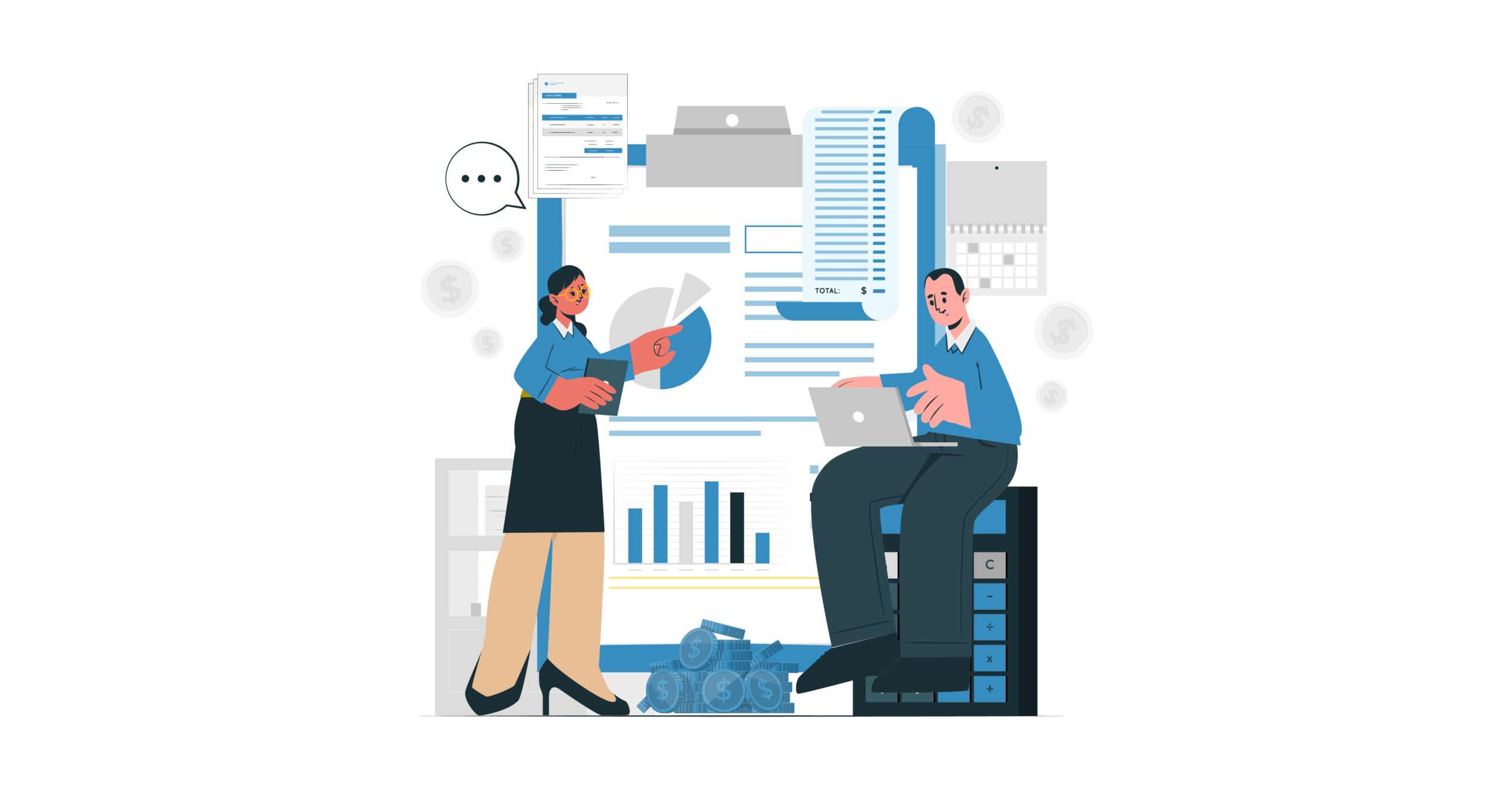The cost of invoice processing involves not only the amount stated on the bill but also various direct and indirect expenses, such as labor and storage costs. In addition, there are hidden costs, such as penalties resulting from errors detected during audits, that many companies overlook. Consequently, the average cost of processing a single paper invoice typically exceeds $10 and can climb as high as $30 to $40 when done manually.
This article explores the reasons behind the high cost of paper-based invoice processing and highlights the significant cost savings that can be achieved through AP automation.
Factors Behind the Average Cost of Invoice Processing

According to Adobe, the cost of invoice processing can range from $15 to $40 per invoice, depending on various factors, including time. To assess how their costs compare with industry averages, businesses can divide the total number of invoices processed by key metrics, such as the operating cost of their accounts payable department. However, there are hidden expenses associated with each invoice.
Let’s look at three factors that can significantly increase the average cost of processing an invoice in paper-based workflows and offer insights on identifying hidden expenses.
1. Consequences of Outdated, Incomplete, or Absent AP Technology
Despite the availability of various cloud-based AP automation systems in today’s market, many companies have yet to fully utilize their capabilities. Some businesses still rely on expensive, proprietary systems developed in-house a decade or more ago. The implementation of such systems was typically complex and challenging, which may have deterred companies from updating them for fear of the cost and hassle of another upgrade.
According to a 2021 whitepaper and survey by Stampli and Treasury Webinars, many companies have upgraded their AP technology to some extent. The survey revealed that payment technology was the most widely leveraged technology at 68%, followed by invoice management at 66%, and approval workflows at 55%.
However, some businesses still rely on manual invoice processing, where staff members handle paper bills as they arrive. This outdated practice can result in various issues, such as errors, delays, and inefficiencies.
2. Human Labor
The process of determining the average cost of invoice processing can take a toll on employees, especially in companies that rely heavily on paper-based workflows.
Handling paper invoices entails tasks such as receiving mail, opening envelopes, manual data entry, double-checking for accuracy, and matching purchase orders. After that, invoices must be sent for approvals, which can take weeks, and AP staff may need to personally deliver approval requests or follow up with multiple departments for missing information.
The involvement of human labor in invoice processing also introduces the risk of errors. Manual data entry, for instance, is not infallible, and workers processing dozens of invoices daily may overlook mistakes that a computer can detect.
3. Increased Risk of Compliance Violations
Manual invoice processing is prone to compliance violations due to the difficulty of tracking and enforcing internal controls in accounts payable. For instance, regulations may require retaining invoices for a certain period, but paper files lack safeguards against accidental or intentional destruction before the retention deadline.
In accounts payable, compliance is a critical success metric, according to a 2021 survey by Stampli and Treasury Webinars, 40% of respondents identified compliance with AP policies as a top driver of AP success.
How AP Automation Can Help Reduce the Average Cost of Invoice Processing

Earlier, we mentioned that the cost of invoice processing can range from $15 to $40 per piece, and for companies that have not automated their AP operations extensively, the process can take 3-4 weeks. In extreme cases where companies still rely heavily on manual processing, this can be even more burdensome.
The good news is that by implementing AP automation, invoices can be processed instantly or within a few days, depending on the finance department’s decision. For companies that handle a significant volume of invoices, AP automation platforms can more or less pay for themselves. If you’re wondering how this is possible, let’s explore how AP automation reduces the average cost of invoice processing.
AP automation solutions can reduce the time previously spent on processing paper invoices.
- Ensure on-time payments and improve capital management.
- Eliminate paper and postage fees, reduce or eliminate storage fees, and streamline the audit process, thereby reducing the costs of processing paper invoices.
- Allow for the capture and analysis of critical data to assess your entire company’s performance.
- Track accounts payable metrics to provide a more accurate projection of your department’s efficiency.
- Provide simple savings with each invoice processed, and companies can set themselves up for significant workflow improvements and savings related to the average cost to process an invoice over time.
Some More Benefits to Consider

Revamping the AP process may seem daunting, particularly if the resulting savings amount to only a few minutes and a few dollars per invoice. However, AP automation solutions are designed to be adaptable, seamlessly integrating with your existing processes and systems. Additionally, there are further advantages to be gained from implementing AP automation.
1. Reduce the time and effort needed for tasks like data entry, AP employees, approvers, managers, and mail deliverers can focus on strategic goals and identify opportunities to save money. This can result in greater efficiency and cost savings for your company.
2. Avoid late fees and take advantage of early-pay discounts by streamlining the approvals process. Building a stronger relationship with vendors can result in additional savings in the long run.
3. Error prone manual processes, but with automation, invoices can be imported automatically, reducing the risk of costly mistakes such as duplicate payments.
4. Reduce the risk of fraud and also get an easily accessible audit trail for future reference.
Final Thoughts
Regardless of the payment method a company chooses, the costs of processing invoices will always be high. While some AP automation systems may increase processing costs by requiring the use of their payment method, Serina offers a high degree of customization within its platform. The solution ensures a painless implementation and affordable costs going forward, making AP technology work for companies even if it hasn’t worked for them before.
By implementing Serina’s AP automation solution, companies can save up to 80% on their average cost to process an invoice.





